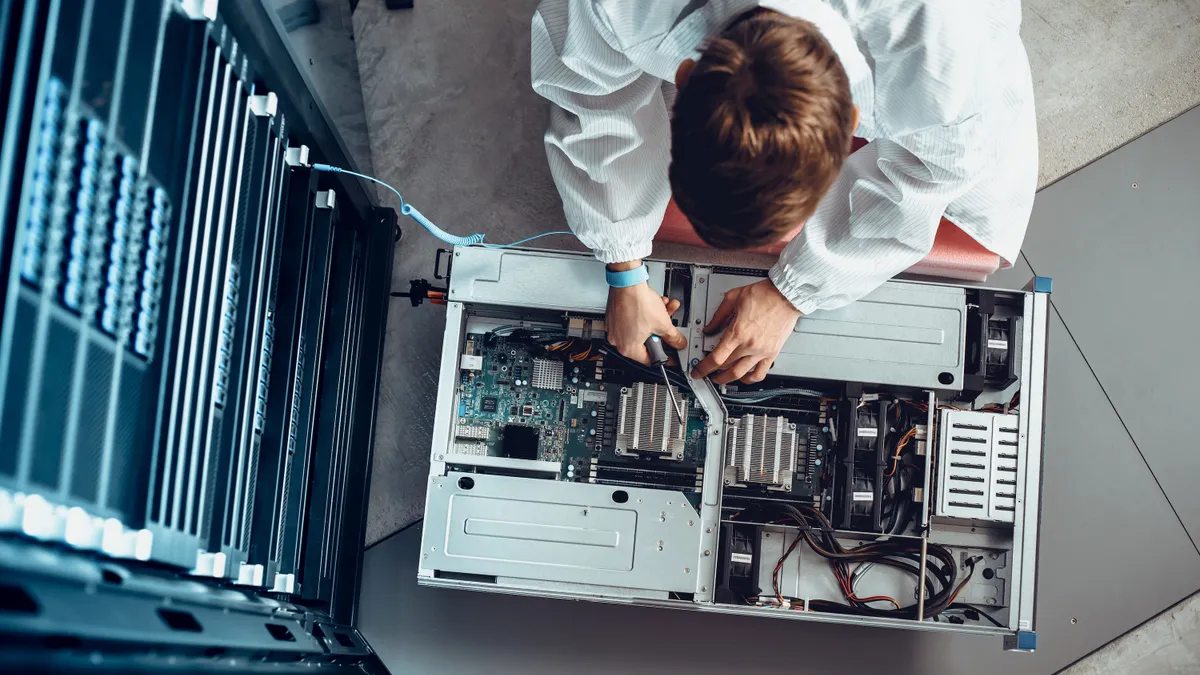When someone thinks of women in the workforce, the energy industry — particularly oil and gas — may not come to mind as a place for gender parity. Only 11% of senior leadership positions in the industry are filled by women, an EY survey revealed, despite understanding that "diversity of thought and experience are key to navigating the disruption in the industry."
For Chevron, meeting the needs of the company has meant chasing diversity initiatives "before it was cool," according to Lee Jourdan, the company's chief diversity officer.
HR Dive spoke with Jourdan to discuss how the company commits to diversity and inclusion for women and minorities. The following conversation has been edited for length and clarity.
HR Dive: How long has Chevron been committed to inclusion and diversity?
Jourdan: We're in our 20th year of employee network programs. The first was started by the gay and lesbian community within the company that demanded the same benefits as others. They challenged leadership to do something about it and the response was yes. Since then, diversity initiatives have been defined by four pillars: Accountability, Communications, Training and Selection, or ACTS. Under each of these categories, they work to advance the culture of the company and move forward for employees.
Today we're proud to say of over 45,000 workers, 32,000 are members of at least one of our 20 employee networks. They include groups that address issues for women, veterans, employees with disabilities and others. One group, Boola Mort (meaning many people) supports indigenous Australians. The women's group is the largest, but it doesn't just include female workers. Allies are encouraged to participate in groups to build relationships, connections and understanding.
HR Dive: Is inclusion a top-down initiative?
Jourdan: The networks give employees a way to keep dialog open, but they also have the ear of management. The Chairman's Inclusion Counsel has Network President's Meetings with the executive leadership team three times per year to discuss issues important to their group and to develop polices and solutions.
Advocating for change, particularly for women, must include men. It's easier to be pulled over a barrier than push over on your own.
The Catalyst programs started with small discussion groups talking about inclusivity. They discuss recognizing behaviors that can bring about change. The program caught fire and had a multiplier effect. People are learning in the discussion circles and then demonstrating the behavior when the leave. The comfort level is raised to talk about seeing something and saying something.
Our chair is incredible at demonstrating visible leadership in the space. What really strikes me here is the culture. The desire is to create a culture where everyone can be their best and be included. When everyone's in, everyone wins. Our overall board diversity is 44%, and we've achieved 99.9% pay equity for women and minorities in the U.S. Our CEO's mantra: "You have to see it if you want to be it."
HR Dive: How do you compare with the typically male dominated energy industry?
Jourdan: With 25% of our global staff women, we're above the industry average, but want to do better to increase representation. A new program, Welcome Back, begun just months ago, is targeting women for returnships. Reentering the workforce after a leave for child or family care or other reasons can be challenging. We're targeting internal and external candidates to re-hone their skills and accelerate the process of getting back into the workforce.
HR Dive: Does inclusion extend beyond the organization?
Jourdan: In addition to work they do within the company, leadership walks the talk in the community as well. We recently awarded $5 million to Catalyst, a women's rights advocacy group for their Men Advocating Real Change (MARC) gender inclusion programming. MARC works to reveal unconscious bias and convert male coworkers into allies. Chevron is in its 20th year partnering with Catalyst, which is currently training 3,000 Chevron employees in 17 locations in 12 countries.
In the sciences, we've been supporting STEM from early education through employment, with an emphasis on advancing STEM opportunities for women and underserved communities. Since 2013, we've invested more than $480 million in support and have reached almost three-quarters of a million students, parents and teachers. For women in particular, our Techbridge Girls programming focuses hands-on learning and mentorship in STEM. EngineerGirl.org promotes engineering opportunities for women and girls.
When it comes to recruiting women in such a traditionally non-female industry, our public persona is a huge factor. Women are doing their homework. I recently asked a paralegal hire why she came to Chevron. She told me she sought out the company because of the diverse and inclusive culture. Walking the talk when it comes to diversity gets out there — especially in an industry that is not historically diverse.





















